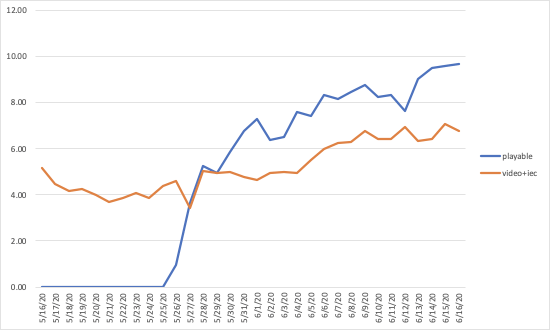Though in-app advertising has been a tried-and-true growth channel for games over the past half-decade, it’s a relatively new one for other app categories. That said, there’s a lot that app developers and growth managers can learn from their gaming counterparts to find success while advertising on in-app ad networks.
Let’s take a look at some best practices for advertising on in-app ad networks, as well as some misconceptions and biases app developers may be surprised to find out aren’t true.
1. Have an open mind when it comes to types of supply
It's common for app advertisers to want to hit the ground running and start in-app advertising efforts in big, recognizable game titles. They may also fall into the trap of stereotyping the supply - assuming that certain types of audiences play certain types of games. In fact, app advertisers often approach our team at ironSource with a list of game titles they believe will perform best for their campaigns.
But this editorial approach of reviewing a site list and cherry-picking publishers doesn’t translate to gaming, where the biggest scale may come from extremely popular titles with unrecognizable names.
Instead, a run-of-network approach, which tests all traffic sources and gathers information from all types of inventory, often outperforms expectation - networks use benchmarks and data to match advertisers to the most effective inventory, such as games that scaled faster than they became household names.
What’s more, running ads across multiple genres and subgenres allows advertisers to widen the net and ultimately maximize profitability. ironSource analyzed campaigns for two different social networks that ran on our network, and when we compared top-performing supply sources by IPM (installs per thousand impressions), we found that the best performing genres varied greatly. Without running across the entire network, it’s unlikely the social app advertisers would have found these high-performing genres.
| Social app A: Top genres | Social app B: Top genres | |
| Sports + racing | Solitaire | |
| Idler | Communications | |
| 4X strategy | Health & Fitness | |
| Turning | Taxi/Ridesharing | |
| Shooter | News & Magazines |
2. See the bigger picture with view-through attribution
A significant proportion of users on the ironSource network - as high as 20% - download apps after seeing an ad not by clicking on the ad itself, but through alternative approaches like going directly to the app store or getting there indirectly via search. Relying on click-only attribution can hurt campaign optimization and put too much weight on “organic” growth - falsely attributing users who were exposed to ads as organic, and undervaluing marketing efforts.
That’s why when working with in-app networks, it’s essential to turn on fingerprinting and view-through attribution (VTA), which helps advertisers properly assess the impact of their campaigns, as well as improve their ability to optimize, as it gives a better understanding of their best-performing supply.
When looking at a recent campaign by an eCommerce app partner, ironSource found that using VTA resulted in a significant number of incremental installs credited to ironSource inventory. In addition, based on the improved performance data and by sharing conversion value data, the app advertiser could optimize for higher value installs. Over time, the advertiser saw eCPI decrease by 57% after turning on VTA.


3. Get creative with creative
In-app advertising gives advertisers an opportunity to break out of their standard ad formats and develop engaging, interactive ad experiences. These have been a hallmark of gaming ads for years and have proven to dramatically increase effectiveness for other categories of apps as well. While it may be easiest to start with traditional video creatives, many advertisers find improved performance when they add interactive end cards and playable ads to their campaigns.
Just like on other channels, the key for creatives on mobile ad networks is A/B testing. In addition to helping advertisers determine the most effective and impactful creative for their campaigns, A/B testing interactive creatives can also unlock insights that advertisers can extend to campaigns on other digital channels or even into their offline messaging.
On a recent campaign for a lifestyle app, ironSource saw performance improve by 50% after moving from a video with an interactive end-card to a full playable ad. ironSource’s Playworks Studio created a gamified playable ad that incorporated lifestyle elements consistent with the branding of the app to create a “relaxing” experience for users.

Bringing it all together
In-app ad networks have proven to be a great source of incremental growth for developers of all kinds. The keys to unlocking that growth are understanding the nuances that differentiate these networks from other channels and approaching growth with a sense of experimentation. Openness to a variety of supply genres, creative units, and appropriate measurement will empower app growth marketers to maximize their user base and scale performance.



